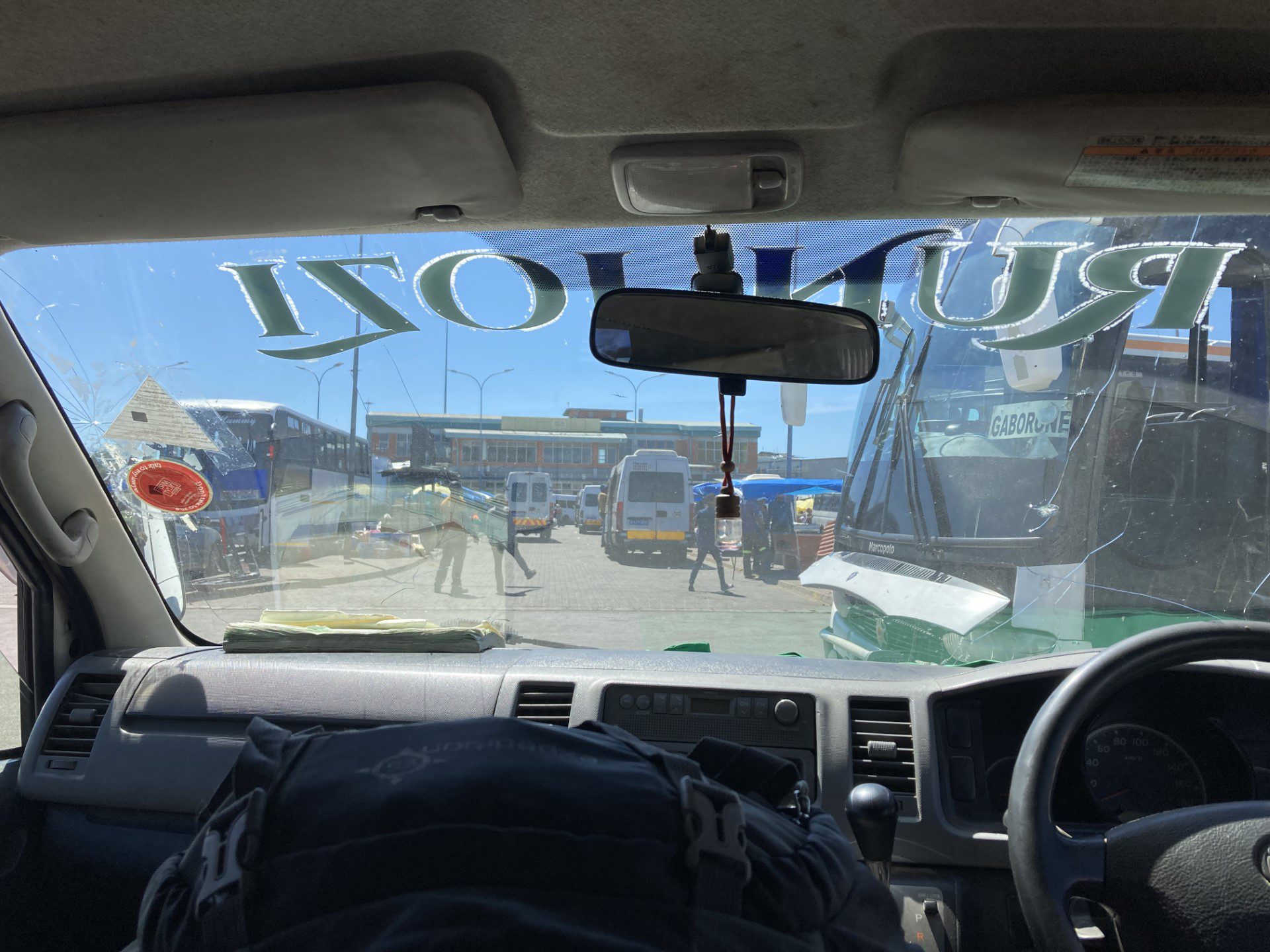You can get to any major town very easily by public transport in Botswana. I came into the country with an Intercape bus from Johannesburg, arriving in Gaborone. At the point of arrival, there was an ATM, some taxis and a little fast food restaurant and shop.
Getting around in Gaborone
There is a network of minibuses in Gaborone, but it is not necessarily the most straightforward to understand when you are there only for a couple of nights. Going to the centre is always easier than getting to a specific place (e.g. your guest house) in the outskirts. You can flag down the minibuses from the side of the road and ask the driver where he is going. His answer might be ‘Block 8’. The districts are called blocks in Gaborone. So if you don’t mind walking a little this definitely works. However, when you are there only for a day or so, it is quite common to get the phone number of one taxi driver and phone them up whenever you need a ride. Usually they will be happy to take you and you can also negotiate a fee for them to wait for you while you’re doing grocery shopping for example. You might have to guide them to your destination as they do not necessarily know how to read a map. I found that they were really good at remembering a route and following descriptions of the way though. So if they don’t know the place you are going to, be prepared to guide them using Google maps.
To flag down a taxi or minibus (called combi in Botswana), wave your stretched out arm on shoulder height. The same gesture applies when hitch-hiking (called simply ‘hiking’). Stretching out your thumb simply means you’re OK. When flagging down a taxi on the side of the road, be sure to agree on a price first. They might ask you if you want ‘a special’. This means having the whole taxi to yourself and is more expensive. Otherwise, they will pick up passengers along the way.
Inter-city public transport in Botswana
The main axes in the country are basically Gaborone-Francistown, Francistown-Nata, Nata-Maun, and Nata-Kasane. Between Gaborone and Francistown there are even actual big buses with power plugs for you to charge your phone and wifi. From Francistown onwards, it is mainly the typical minibuses that go everywhere. The prices are usually set, so there is no need to haggle when taking a minibus or even a taxi. The price from Eselbe Campsite to Choppies in Nata for instance was fixed at 33 pula (~2,4€). Some other examples to give you an idea of the prices: the price of the minibus from Francistown to Nata was 70 pula (~5€) per person and to go from Gaborone to Francistown in a big bus was 155 pula (~11,1€).
To take a minibus (i.e. combi) in Botswana:
1, Ask around for the minibus/taxi rank to go to your destination. Taxi drivers, but also random people in the streets can help you.
2, Go to the right minibus/taxi rank. It is best to go rather early in the morning to be sure you get to your destination before dark (driving at night is best to be avoided because of elephants crossing the roads) and also because there sometimes aren’t that many minibuses leaving to some more peculiar destinations.
3, Ask either a driver or anybody who seems approachable where the bus going to XY is. Usually someone will ask you where you are going as soon as you approach the parked minibuses and even take your bag and show you to the right minibus.
3, At the indicated minibus, ask either a passenger, the conductor or the driver to confirm the destination. Then you can put your bag wherever they tell you to put it.
4, Take a seat. In my experience it is best to sit rather in the back in Botswanan buses and minibuses because the engine is usually in the front, so in the first row it will be rather noisy, there is less space for legs and the engine gets hot as well.
5, Wait for the minibus to fill up. In Botswana there are actual schedules for the major routes and the bus will most probably leave more or less on time, even when it is not full yet. This is very uncommon in the region, so enjoy it. For some less popular destinations like going to the Zimbabwean border (Plumtree) from Francistown, you’ll have to wait until at least half of the minibus is full before leaving. In my case, this took about two hours.
6, Pay when the conductor asks you to by handing the money forward to them, specifying your destination. This might be at the beginning of the journey or well into the trip. You will get your change and a small piece of paper as your ticket.
Pest control checkpoints in Botswana
When crossing into Botswana by land, you will be asked to wipe your shoes on a wet towel on the floor. This is a kind of disinfectant to stop foot and mouth disease from spreading. I was quite puzzled by the shoe washing stations at first until someone explained the purpose to me. There are checkpoints also within the country where the minibus will stop, everybody gets out and wipes their shoes, the bus drives through a kind of pond of disinfectant on the road or is sprayed with it, everybody gets in again and the journey continues.

